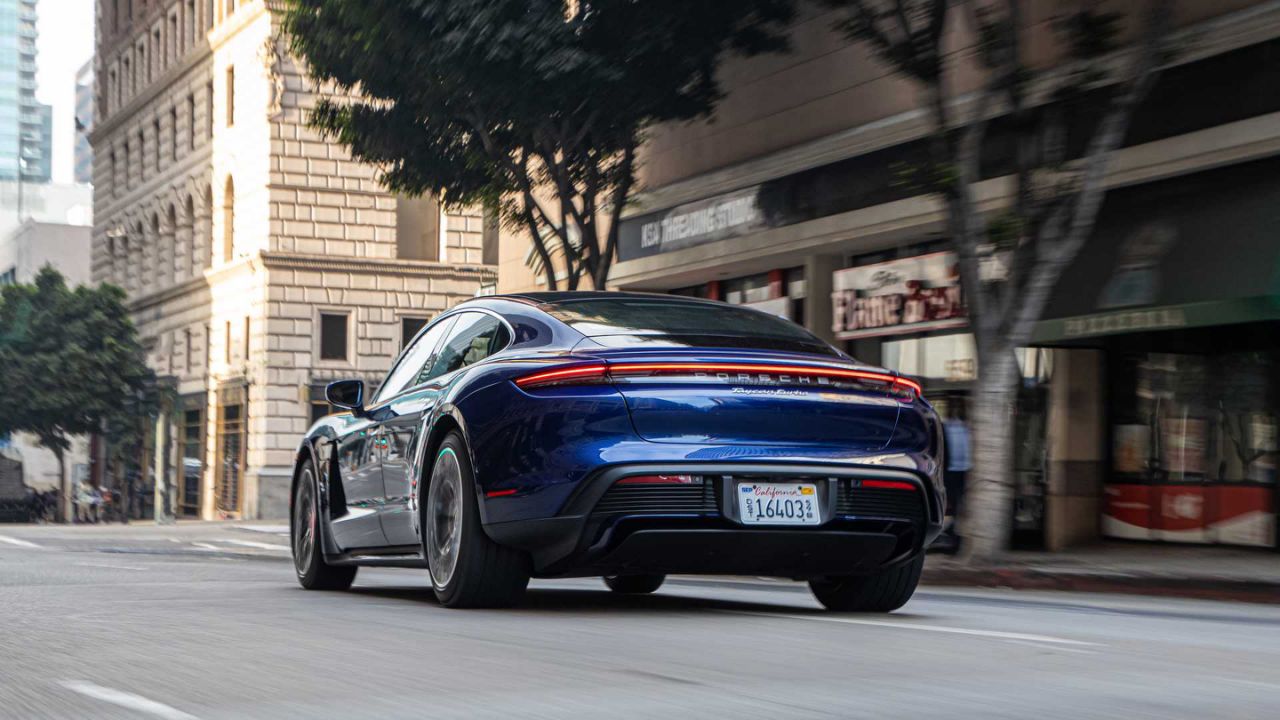Rahal shares his views on his new Porsche Taycan Turbo S
 |
| Graham Rahal's Porsche Taycan Turbo S |
IndyCar driver Graham Rahal has a new Porsche Taycan Turbo S and he shares his views on Instagram.
I’ve gone green! Kinda.
Real talk, from a gas guzzling car nerd… I think Porsche has done it best so far in the sedan market. The car looks great and is faster than he**! If i was intrigued, this car is what did it. And I am, to be clear. But, I’ve already noticed some major negatives. As we live in the world of “we must electrify", here’s some major issues from my point of view.
1 – Contrary to what people think, even in SoCal today we NEEDED a charge. Guess what, nowhere to go. Only a couple spots, all full. If in a panic, you’re toast. I always can get fuel and be full in 5 min (not with electric), and just a reminder when I did get a charge it wasn’t free! Also note, when plugged in at home (120V plug) overnight it only gained about 10 miles in range, so you need 240V or a home based “supercharger"
2 – It makes no noise. I’m sorry, but cars must make noise. It’s a massive part of the driving element that is missing. It’s also part of the safety element. People seriously don’t hear you coming, and rarely do they look!
3 – I always worried about conserving miles on the range. Maybe for driving around LA this works, but where I’m from in the Midwest it’s not a formidable means of transportation for me. Maybe someday, but not yet. The amount of infrastructure change that must happen is insane, and would cost tens of millions of dollars. It’s not a 10 years off thing, this is a lot longer than that in my eyes!
4 – Stick to gas. If nothing else it’s a heck of a lot more fun hearing an engine really roar!
With that all being said, I do love this car. I’m a tech guy and a Porsche guy, having one of the very first Taycan Turbo S is an honor for me. However, it comes with some major daily life adjustments, but of course its better for the environment which is always a plus too! Now, what’s your opinion?
AutoRacing1.com's Opinion: Electric is the future, get used to it.
Electric motors generate motion, not heat. A fossil-fuel engine produces motion, basically, with tiny controlled explosions. Those explosions push interlocking pieces of metal, which connect to a driveshaft. All that metal rubbing together generates a lot of heat, even when the parts are swimming in oil. That’s energy that’s not being used to push a vehicle forward.
The contrast with an electric motor couldn’t be bigger. There’s zero contact between the motor and a vehicle’s driveshaft. Just an air gap. The only thing reacting … is a magnetic field.
With the driveshaft pushed magnetically instead of mechanically, even a running electric motor is barely warm to the touch, eliminating a major energy waste.
That efficiency has one small downside. The wasted heat from a gas engine becomes free cabin heat in the winter, while electric vehicles have to produce extra heat as needed. Cold also has a negative impact on batteries, meaning that electric systems take hits to range, performance, and charging speed in the cold.
They’re more powerful (most of the times that matter). This one goes against all our images of feral, gas-thirsty Detroit muscle cars. But for proof, look no further than Tesla’s recently introduced “Ludicrous Speed" mode, which makes the car’s acceleration competitive with gas-driven supercars that cost millions of dollars.
That’s possible because at lower speeds, electric motors deliver more torque than gas engines. Torque is what you need to get a car going, and with more of it, electrics out-accelerate comparable gas engines.
Gas engines do still perform better at very high speeds than electric—so motorsports and law enforcement may stay gas-dependent for longer.
They’re simpler. Electrics’ better torque has a secondary advantage. With less torque at low speeds, gas engines need help from a transmission to get moving. Electric engines by and large don’t need transmissions.
Diesel buses, for example, usually have complex eight- or nine-speed transmissions. Proterra’s buses, by contrast, have a two-speed transmission—and its only role is changing efficiency profiles, not acceleration.
Ditching the complex gears and fluids of a transmission leads to better efficiency and agility. In effect there’s this internal brake inside of a transmission that keeps it from wanting to spin freely.
They’re (vastly) easier to service. Electric drivetrains have far fewer subsystems—no transmission, no oil tank, no catalytic converter. That means there’s less to break down. (It’s also fairly mind-bending—looking at an electric motor, you might think someone just stole half the machine.)
And the heart of an electric drivetrain—the motor—is much smaller and more streamlined than its gas counterpart. Even the motor that drives Proterra’s full-sized buses is small enough to be lifted by one person. It can be entirely removed by a team of two mechanics, and it’s cheap enough that it can be replaced for purely preventative reasons.
They feed themselves. Every electric motor is also an electric generator. That makes it very simple to implement regenerative braking, which recaptures forward momentum as battery charging. The really amazing part is that this process, just like acceleration, is electrical, not mechanical.
The rotor is always spinning in the same direction, but the electrical field reverses. That sends electrons streaming back into the battery (so to speak), while helping slow the vehicle.
